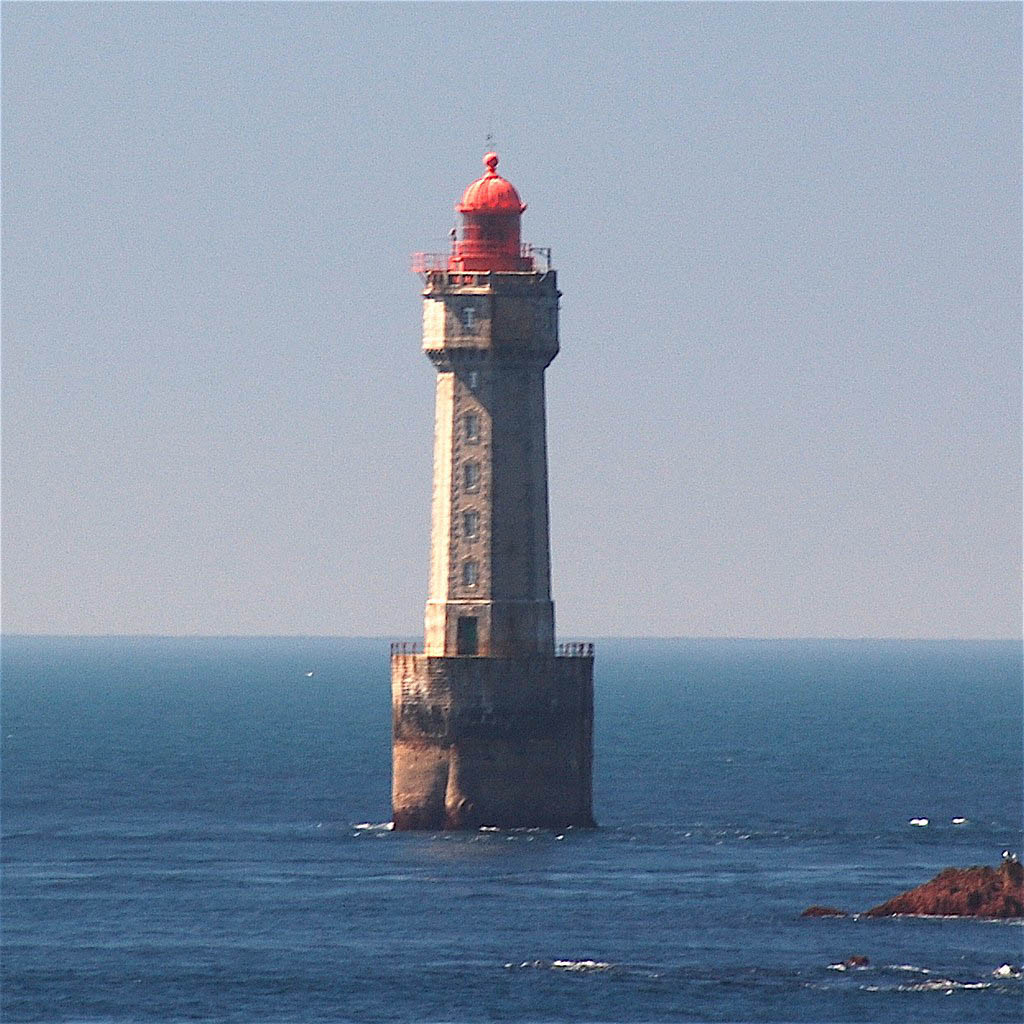The lighthouse La Jument is located in Brittany, in Northwestern France. The lighthouse is situated roughly 300 meters off the shore of the island of Ushant on a rock known as La Jument. In 2017, it was added to the list of historic monuments. Along with the Nividic lighthouse and the Kreac’h lighthouse, it is one of the three most well-known lighthouses in the area.
History
Sailors have long recognized this portion of the west coast of Northern France, or Brittany, as a hazardous and untamed region. In addition to being the busiest sealane and the westernmost point of land, it is also subject to severe weather for much of the year. Because of this, the region has seen several shipwrecks over the ages; for instance, thirty-one ships sank there between 1888 and 1904.
Shortly after the June 1896 disaster of the Glasgow-built steamer liner SS Drummond Castle, which claimed the lives of about 250 people, preparations were made to erect a lighthouse on La Jument. A wealthy Frenchman who had nearly perished in a previous shipwreck provided private financing for the construction project. The frequently difficult weather at sea prevented the lighthouse from being completed by 1911, even though construction had started in 1904.
1989 saw the lighthouse gain widespread recognition thanks to a set of images captured by Jean Guichard.
In the last hundred years, the lighthouse La Jument has significantly improved maritime safety in the region, which the Bretons refer to as the Iroise Sea or Mer d’Iroise. Nevertheless, with their frequent violent storms, enormous waves, and powerful currents, the waters off the west coast of Brittany continue to rank among the most perilous in all of Europe.
On December 21, 1989, one of those notorious storms on the Iroise Sea occurred. Storm-force gusts and enormous waves, reaching heights of 20 to 30 meters, smashed dramatically against the lighthouse due to a front of low pressure that originated in Ireland.
The lighthouse’s lower windows were broken by the waves, which also tore the front door, flooded the tower, and carried the furniture away.
Simultaneously, photographer Jean Guichard rented a helicopter near Lorient to capture photographs of the storm from above. Even though the flying conditions were highly perilous, Guichard still intended to fly across the Iroise Sea.
After arriving to La Jument, the chopper circled so Guichard could get pictures of the waves crashing against the lighthouse. Théodore Malgorn heard the helicopter from inside the tower and went below to investigate. A massive wave broke against the lighthouse at that precise moment, giving Guichard the famous shot that made him famous. Malgorn hurried back inside in time to save his life after abruptly realizing that a massive wave was going to swallow the building. “I would not have made it back into the tower if I had been a little further away from the door,” he stated in an interview. And today I would be dead. Playing with the sea is not allowed.”

Jean Guichard won second place in the 1991 World Press Photo award for his stunning storm photos from 1989, which went viral right away. Following the publication of La Jument in international newspapers and publications, Guichard published a best-selling book about lighthouses as well as a series of poster prints.
The Breton lighthouse is the most well-known lighthouse print in the world because to La Jument’s poster print, which has sold well over a million copies.
Brittany’s lighthouses have been automated in recent years, and the lighthouse at La Jument hasn’t had a keeper since 1991. Before automation took control, Jean Guichard spent many years trying to capture the maritime traditions of Brittany. Nowadays, a large number of his images are valued historically and his work is highly respected.







